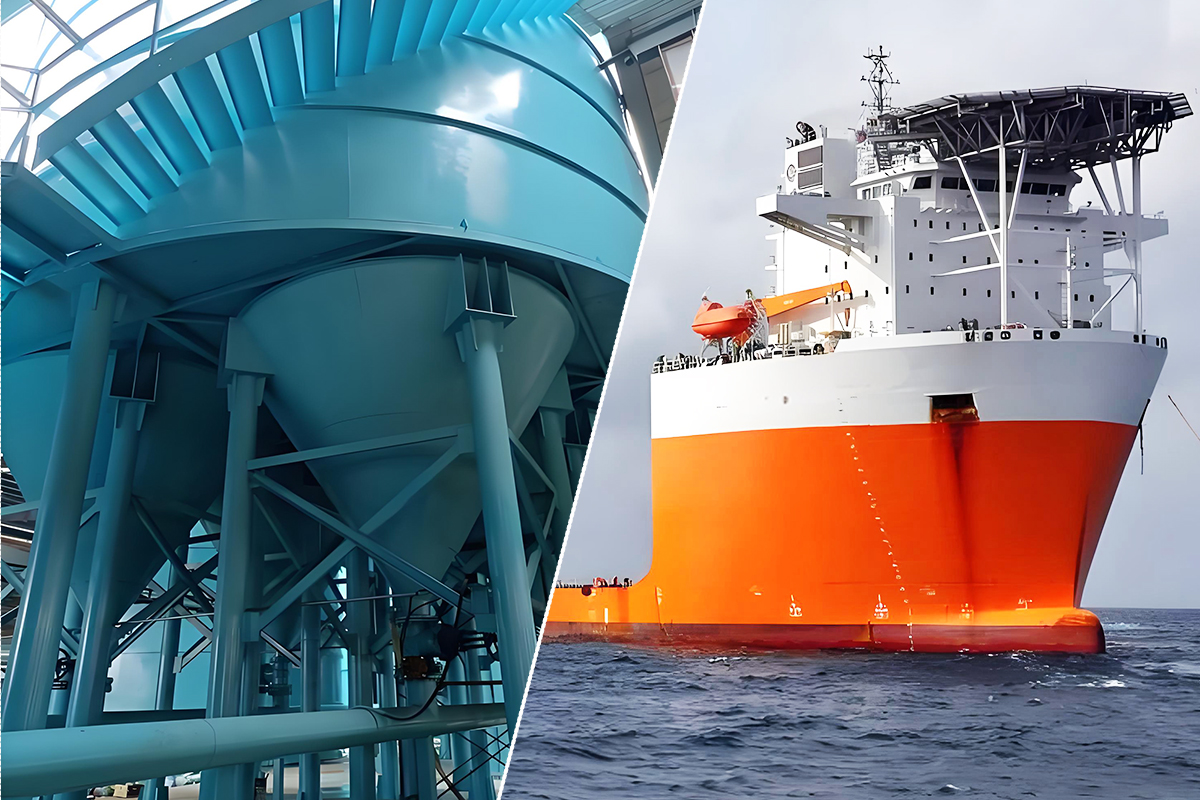
Look around. The bridges you cross, the power plants that light your home, the ships that transport goods across oceans, and the pipelines that fuel our industries—these monumental structures share a silent, relentless enemy. And its name is corrosion. But for every formidable enemy, there is a powerful defense. That defense is the sophisticated science of industrial anti-corrosion and anti-rust paints.
Far more than just a layer of color, these coatings are high-performance engineered systems, acting as an invisible shield that safeguards the integrity and longevity of the assets our modern world depends on.
Understanding Corrosion and Rust
Corrosion is a natural electrochemical process where a refined metal—such as steel, the backbone of modern infrastructure—reverts to a more chemically stable form, like its oxide. It’s essentially the metal’s attempt to return to its original state in the ground.
Rust is the common name for the specific corrosion of iron and its alloys, resulting in those familiar flaky, red-orange oxides. This destructive process moisture alone to start the reaction.
The speed of this attack is accelerated by several factors:
Marine Environments:Salt is a superb electrolyte, making offshore platforms, ships, and coastal structures exceptionally vulnerable.
Industrial Atmospheres: Chemical plants release acids, sulfurs, and other pollutants that aggressively eat away at metal surfaces.
Humidity and Temperature Cycles:Constant moisture and the expansion/contraction from temperature changes stress coatings and expose new metal to attack.
The consequences of unchecked corrosion are dire: catastrophic structural failures, devastating environmental disasters from leaking containers, unplanned operational downtime, and astronomical repair costs. This is why the protective coating system is not a mere cosmetic afterthought; it is a fundamental and critical engineering safeguard.
A Multi-Layered Defense: Deconstructing a Coating System
1. The Primer:
The primer is the most critical layer, as it is applied directly to the prepared steel surface. Its functions are non-negotiable:
Adhesion: It must form an unbreakable bond with the metal substrate.
Corrosion Inhibition: Many primers contain active pigments like zinc phosphate or other non-toxic alternatives that chemically suppress the corrosion reaction at the metal surface.
Cathodic Protection: Zinc-Rich Primers take this a step further. The zinc particles in the coating are sacrificially anodic to steel. This means the zinc will corrode *in place of* the steel, offering a proactive defense even if the coating is slightly damaged.
2. The Intermediate Coat:
This layer, often a high-build epoxy, serves as the physical workhorse of the system. Its primary jobs are:
Barrier Protection: It dramatically increases the film thickness, creating a tough, impermeable shield that blocks moisture, oxygen, and chemical penetrants.
Durability: It adds significant abrasion and impact resistance, protecting the primer from mechanical damage.
Build: It creates a uniform surface, bridging any minor imperfections and providing a perfect substrate for the topcoat.
3. The Topcoat:
The topcoat is the layer that faces the outside world. While it provides the final color and aesthetic appeal, its technical roles are crucial:
Weather Resistance: It is formulated to resist degradation from UV radiation, preventing chalking, gloss loss, and film breakdown.
Chemical and Fade Resistance: It repels specific chemicals and maintains its color in harsh environments.
Cleanability and Gloss Retention: In many facilities, a high-gloss, easy-to-clean surface is essential for hygiene and light reflection.
Types of Industrial Coatings
Selecting the right coating dictated by the environment, the substrate, and the performance requirements.
Epoxy Coatings: The workhorse of the industry. Renowned for their excellent adhesion, hardness, and outstanding resistance to chemicals, solvents, and moisture. Their weakness is poor UV resistance, which causes chalking and degradation.
Polyurethane Coatings: The king of topcoats. Aliphatic polyurethanes provide exceptional gloss and color retention, even under prolonged UV exposure. They are also highly resistant to abrasion and chemicals, making them the perfect finish for bridges, industrial equipment, and architectural steel.
Zinc-Rich Primers (ZRPs): The ultimate first line of defense for steel in corrosive environments. Available as epoxy (organic) or silicate (inorganic), ZRPs provide sacrificial cathodic protection. Inorganic zinc silicates are exceptionally durable and heat-resistant, making them ideal for ship hulls, offshore structures, and petrochemical plants.
Alkyd Coatings: Traditional, oil-based paints that are easy to apply and cost-effective for mild, interior, or rural environments. Their limited durability and chemical resistance.
Fluoropolymer Coatings (PVDF): Offer the highest level of UV and weather resistance, used on iconic buildings where long-term color stability is paramount.
The most advanced coating in the world will fail if applied to a poorly prepared surface. The industry’s golden rule is that the performance of a coating system is 49% dependent on surface preparation and 51% on the coating itself.
The primary method is abrasive blasting . This process does two essential things: removes all contaminants: rust, mill scale, salts, oils, and old paint, creating a perfectly clean surface.
It creates a surface profile or “anchor pattern,” a controlled roughness that dramatically increases the surface area for the primer to mechanically grip onto.
Conclusion:
A correctly specified and applied coating system pays for itself many times over by:
Extending Service Life from years to decades.
Drastically Reducing Maintenance and emergency repair costs.
Ensuring Operational Safety and preventing catastrophic failures.
Maximizing Uptime and operational efficiency.
Post time: Nov-06-2025

